Why do cyclists shave their legs?

- 1. Introduction to Cycling and Body Hair
- 2. Aerodynamics and Speed
- 3. Health and Hygiene Aspects
- 4. Injury Management in Cycling
- - How Shaved Legs Assist in Treating Wounds
- - The Role of Shaving in Post-Injury Massage and Physiotherapy
- 5. Psychological Effects and Aesthetics
- - Perception and Confidence: The Psychological Benefits of Hair Removal
- - The Aesthetics of Shaved Legs in the Professional Cycling World
- 6. Conclusion
1. Introduction to Cycling and Body Hair
Cycling, a sport celebrated globally, brings with it a unique culture and numerous traditions, one of which involves the subject of body hair. Ever noticed how many cyclists, specifically those belonging to the professional realm, often possess shaved legs? This isn't merely a fashion statement or subjective aesthetic preference. The trend of hair removal amongst cyclists has roots sunk deep into the history of the sport, serving distinctive purposes relevant even today. From aerodynamics to hygiene and from injury management to psychological implications, shaving in this athletic community carries more weight than meets the eye. As we peddle further into the world of cycling and body hair, prepare to uncover the stimulating facts interlaced with this intriguing topic.
- Purpose of Hair Removal in Cycling
The purpose of hair removal in cycling, specifically leg shaving, is a fascinating aspect of professional cycling culture that is often overlooked by the casual observer. This practice is not purely ornamental but serves functional benefits that can significantly enhance a cyclist's performance and experience. At first glance, one might scratch their head, asking, "Why do cyclists shave their legs?" The answers lie in the intricate details of this high-speed sport. Aerodynamics is a key factor. Although the benefits of shaving for aerodynamics are debated, even the slightest reduction in air resistance can make a difference in a race where every second counts. Hair can create drag, which slows cyclists down. By removing this barrier, cyclists can slice through the air with greater ease and speed. Another valuable advantage resides in the realm of hygiene and health. Shaved legs are easier to keep clean, reducing the risk of infection if a cyclist falls and sustains an injury. The hairless skin is also more conducive to post-injury treatments like dressing wounds or applying ointments. Moreover, a professional cyclist has to frequently undergo physiotherapy and massages. Hairless skin simplifies this process by providing a smooth surface for the therapist to work on. Lastly, there is a certain psychological edge that might be gained from shaving. The habit may imbue cyclists with a sense of belonging, an enhanced self-image, and the confidence of being 'race-ready’. In a nutshell, leg shaving in cycling, far from being a redundant ritual, plays a crucial role in performance, health, and psychology.
- Historical Roots of Shaving in the Cycling Community
Delving into the historical roots of this peculiar shaving tradition within the cycling universe reveals fascinating insights. It was in the mid-20th century that professional cyclists started embracing the clean-shaven look. The tradition, initially shrouded in the practicality of post-race massage benefits, began becoming a symbol of professionalism and commitment to the sport. Would you believe us if we revealed that early cyclists engaged in this practice not only for practical reasons, but also as a unique identifier that set them apart? Yes, the absence of leg hair was a distinct marker indicating their dedication towards the sport, separating them from casual cyclists and symbolizing their racer status. Moreover, allure of a smooth and sleek look further popularized the trend, well beyond matters of efficiency or practical benefits. Interestingly, while initially the practice was almost exclusive to the world of professional cycling, its adoption has steadily expanded. Today, many amateur and casual cyclists find it a norm to go hairless. Indeed, the reasons may range from the logic of better aerodynamics to pure aesthetics, but the tradition persists, solidifying its roots firmly within the cycling culture.
2. Aerodynamics and Speed
Breaking into the mechanics of cycling, the role of air resistance is a crucial facet to understand. Swift movement against air generates friction or drag, causing cyclists to expend more energy to cut through invisible layers. Imagine slicing butter with a knife; it's invariably smoother with a sleek, hairless blade. In the same context, shaved legs, stripped of erratic hair, reduce air resistance, optimizing cyclists' speed. This equation of aerodynamics and speed upgrades performance, converting slight seconds into game-changing leads. So, the shaving ritual isn't just about fitting into the club culture; it's more about embracing a science-backed practice optimizing performance on the track.
- Understanding the Role of Air Resistance
From a physics standpoint, air resistance plays a significant role in how cyclists propel themselves forward. But what role does shaving have in minimizing this force that's inherently working against a rider's nimbleness and speed? It's quite simple really. It all boils down to the fact that a smooth surface provides less air resistance than a hairy one. Hair essentially acts like tiny aerodynamic anchors that cling onto the air particles as you try to surge ahead, subtly hindering your momentum. The principle at work here is the same as what swimmers or race car drivers leverage, by using specially-designed suits or polished exteriors to limit the drag force slowing them down. For cyclists, having shaved legs creates an advantage by providing a surface that slips more easily through the wind. This minimizes drag, making it easier for you to maintain higher speeds, cover greater distances, and expend less energy to keep the pedals turning. Ever wondered why it feels easier to ride on a calm day than on a windy one? That's air resistance for you. It might sound a bit extreme and the gains may be marginal for a casual cyclist, but when you're competing at the top level, aligning every aspect to maximize aerodynamic efficiency becomes paramount. This is the real-world application of physics principles to gain a competitive edge! Is it time for you to consider the smooth pursuit of shaving?
- Shaved Legs and Enhanced Performance
Within the thrilling realm of cycling, every parameter influencing speed becomes vital—leg hair is no exception. When it comes to the correlation between **shaved legs and enhanced performance**, science gives us intriguing insights. Research suggests that hairless skin could potentially cut down air resistance, which usually works as speed's nemesis. Imagine saddling up your favorite cycle, your shaved legs slicing through the wind, air slipping off your skin like water off a duck's back. It's not just poetry; there's a potential physics underpinning the effect. A study by Specialized’s wind tunnel research underscored this by revealing that shaving off the hair might reduce drag by about 7%, resulting in significant time savings over long distances or high speeds. The domino effect of seamless, hair-free skin enhancing the aerodynamics in cycling might debunk the myth that it's all about aesthetics. In the cold calculus of competitive racing, this adds up to crucial saved minutes, potentially turning a second-place finish into gold! So, the next time you decide to shave your legs for cycling, remember—it’s not just for the looks, it's for the *win*.
3. Health and Hygiene Aspects
Embarking on the health and hygiene facet of cycling, one can't overlook the integral role that hair removal plays. Primarily, cyclists often encounter the sweaty trials of long rides. Dense leg hair, unfortunately, interferes with effective sweat evaporation, causing discomfort and potential skin issues. Prompted by this, shaving comes in as a knight in shining armor, improving the drying process and significantly decreasing the unpleasant sticky sensation. Not only comfort, hair-free skin significantly reduces the risk of bacterial infections, a concern prevalent amidst cyclists. Clean-shaven legs, thus, create an inhospitable environment for harmful bacteria, providing a safety shield for passionate cyclers against unsolicited health problems. Definitely, hygiene and health form a convincing argument in favor of cyclists going razor in hand.
- How Hair Interferes with Sweat Absorption
When it comes to sports like cycling, things move beyond just pedaling hard; the focus shifts to every detail, including how your body manages sweat. Wouldn't it sound a bit peculiar if I tell you that your body hair plays a significant role in sweat absorption, ergo affecting your cycling performance? Here's how it works. Body hair traps sweat and moisture, which subsequently can disturb a cyclist's focus and comfort during their ride. Simultaneously, this accumulated sweat could eventually lead to skin irritation, promoting an unhygienic environment that might invite bacteria or even infections. Now, you might argue, "isn't sweat supposed to cool us down?" Yes, you're correct there. But in the case of cycling, excessive sweat trapped by dense body hair could exacerbate friction between skin and clothing, leading to—it's painful to even think about—chaffing. By shaving body hair, especially on legs, you essentially optimize your body's natural cooling mechanism. This enables sweat to evaporate quickly off your skin, ensuring a smoother, more comfortable ride - free from distracting irritations. The connection between hair and sweat absorption might seem trivial, but in an endurance-based sport like cycling, every single detail contributes to your overall efficiency and performance. Keep these thoughts in mind the next time you're prepping for a ride, will you?
- Shaving and the Reduction of Infections
4. Injury Management in Cycling
Injury management is a critical aspect of any cyclists' routine, and interestingly, this is where the topic of shaving takes a pivotal turn. You might wonder, how can hairless legs aid in handling injuries? Well, when you're pedaling hard and fast and, unfortunately, meet with a crash, it's easier to clean the wound and apply dressing on a shaved surface. Hence, minimizing the risk of further infections. Additionally, shaved legs are a boon when it comes to receiving post-injury massages and physiotherapy. Trained hands can easily slide over smoothly shaved legs, pinpointing problem areas and working their magic efficiently. So, shaved legs aren't just for aesthetics or speed; they are a practical strategy for implementing effective injury management protocols.
- How Shaved Legs Assist in Treating Wounds
When we step onto the subject of wound management related to cycling, one may wonder, how do shaved legs assist in treating wounds? Let's delve into the details. Shaved legs, contrary to their hairy counterparts, have a distinct advantage when it comes to wound treatment. When skin is devoid of hair, it simplifies the process of cleaning an injury. Dirt and bacteria, common inhabitants of body hair, are effortlessly ushered away giving no harbor to potential forms of infection. This aids substantially in the initial assessment of a wound, as well, making it easier to judge the depth and severity, lending to more precise treatment. Afterward, the application of dressing becomes a smoother operation, sans the hindrance of tangled hairs. Moreover, in the unfortunate event of requiring stitches, shaved skin significantly reduces the discomfort involved in the procedure and thereafter. Removing the hair around the wound creates a sterile environment, improving the healing efficiency, bypassing unnecessary complications. Furthermore, having shaved legs accelerates the adhesive bandage removal process, sparing cyclists the minor but rather obnoxious pain. So, while it may seem superficial at the outset, shaving legs has noteworthy implications in the realm of wound treatment and cycling performance. It remains a key factor contributing not only to speed but also health and safety.
- The Role of Shaving in Post-Injury Massage and Physiotherapy
Despite being widely overlooked, the role of shaving in post-injury massage and physiotherapy stands as a distinct benefit in the cycling world. If you ever wondered why cyclists continuously opt for sleek, hairless legs, take a peek at post-injury care. Shaved legs, besides being an aesthetically pleasing norm in the professional cycling community, significantly aid general wound care procedures. Gravel, dirt, and road rash are common wounds amongst cyclists and, with shaved legs, the process of cleaning these wounds becomes less complicated and significantly less painful. There's no getting around the fact that removing bandages from hairy legs is an experience most would prefer to avoid. Also, physiotherapists are unanimously thankful for bare legs when it comes to massage and physiotherapy treatments. With no hair in the way, treatments can be conducted smoothly, with oils and creams working more effectively on the skin. Furthermore, it's often stated that hairless skin could enhance the >therapist's sensitivity to muscle issues during a massage, providing a sense of touch that is more accurate and nuanced. Hence, it's clear that shaving indeed plays a critical role in injury management for cyclists, overriding mere aesthetics and transcending into practical health benefits.
5. Psychological Effects and Aesthetics
In the multi-faceted world of professional cycling, the choice to shed those layers of leg hair extends beyond mere physical considerations. Embracing smooth, hairless legs can substantially impact a cyclist's mental game. It's a silent nod to the larger cycling community, fostering a sense of camaraderie. Internally, achieving this distinctive look can boost a rider’s self-confidence, fueling the psychological endurance requisite in conquering challenging terrains. Moreover, let's not discount public perception. Shaved legs, a hallmark of the seasoned cyclist, can directly influence the audience's perception of a rider's commitment and professionalism. The smooth-skin aesthetic, while divisive, is undeniably entrenched in cycling culture.
- Perception and Confidence: The Psychological Benefits of Hair Removal
Perception often plays a key role in confidence, especially in competitive environments such as cycling. Hair removal, seemingly a simple act, can contribute enormously to improved self-assurance amongst cyclists. Why? Mainly because when we change our external image, it often impacts our internal perspective. When a cyclist chips off their body hair, they are, in a way, stepping into the shoes of a professional athlete. This transformation alone can boost their confidence, instilling a winning mindset that can lead to improved performance. While the outside world may perceive this as a purely aesthetic choice, it delivers much more profound psychological benefits. In the world of cycling, where every second count, even the smallest iota of added self-assurance can spell the difference between victory and defeat. Hence, hair removal is not just a vanity-concerned act; in actuality, it's a powerful psychological tool, indirectly contributing to a cyclist's mental strength and competitive edge. Next time you spot a cyclist with shaved legs, remember, there's more beneath the surface than meets the eye. It's not just about looking the part, but also feeling the part, translating into actual on-track success.
- The Aesthetics of Shaved Legs in the Professional Cycling World
In the highly competitive world of professional cycling, aesthetics play a vital role - and this is particularly true when it comes to the **"smooth and sleek"** look of shaved legs. While performance and health factors clearly influence this grooming habit, aesthetics cannot be overlooked. For starters, a cyclist with neatly shaved legs shows their commitment to their sport, embracing a tradition deeply ingrained in cycling culture. Not to mention that the gleaming shine of muscular, hair-free legs can confer a significant psychological boost, making a cyclist feel faster even before they hit the road. Shaved legs also highlight the muscle definition, allowing the hard-earned fruits of grueling training to be showcased. Let's not forget, the sight of a perfectly-rounded calf muscle sans hair is a more pleasing and arguably more professional sight than their hairy counterparts, especially when coated in a shine of sweat under intense sun. The aesthetic appeal, linked with the sense of belonging to a professional community, prompts many athletes to maintain this trend, despite the ongoing debate over its actual effects on performance. In the end, the perfection of shaved legs in the professional cycling world is not just about records and race wins; it's also about self-confidence, comradery, and maintaining a long-standing tradition.
6. Conclusion
In summing up, the act of shaving in cycling transcends mere aesthetics. It's intricately woven into the fabric of the sport, driven by compelling factors such as streamlined speed through superior aerodynamics. It also enhances hygiene, notably reducing chances of infection, and plays a vital role in efficient wound management. On top of it all lies the intangible psychological edge of feeling sleeker and professional that comes along with it. Nonetheless, it boils down to individual choice. The decision to shave isn't a one-size-fits-all, rather, it's a personal one where perceived benefits must outbalance the time and effort involved.
- Balancing the Benefits and Drawbacks
Casting a critical glance at the topic of body hair removal and cycling, the benefits and drawbacks often weigh evenly on the scales. While the advantages are explicit and abundant, the imperfections of the process cannot be overlooked. To begin with, removing body hair impacts positively on the aerodynamics of cycling. Shaving enhances cyclists' performance by reducing air resistance, thereby augmenting their speed on the road. On the flip side, the risks of shaving like skin irritations, infections, and ingrown hairs can be a major stumbling block for many. Plus, shaving can be a tiresome and time-consuming process, especially for cyclists with a busy schedule. Considering health aspects, a shaven skin better deals with sweat absorption and may minimize the chance of bacterial infection. However, a raw skin layer exposed post-shaving is vulnerable to weather elements and can accelerate skin damage. From an injury management perspective, shaved legs allow for smoother wound treatments and physiotherapy sessions, downplaying the pain usually associated with hair interference. Conversely, it's not a pleasant sight seeing wounds inflicted on a hairless surface. Aesthetically and psychologically, a shaved body is more acceptable in the professional cycling world, boosting a cyclist's morale. Nevertheless, the incessant need for upkeep might be mentally exhausting for some. All things considered, the choice of shaving is a fine balance between its pros and cons, largely relying on an individual's priorities and comfort.
- The Choice to Shave: Personal Preference or Necessity?
When it comes to waving goodbye to body hair in the cycling world, the decision still proves to be polarizing. Is it a matter of yielding to personal preference or bowing down to the unspoken rules of necessity? The truth we unearth might surprise you. Shaving, as we’ve uncovered, possesses the potential to shape performance, influence health and hygiene, ease the treatment of injuries, and even impact mental fortitude and aesthetics. Despite the loud voice of tradition echoing in the professional cycling corridors, the choice ultimately dwells in the hands (or legs) of the individual rider. Delving into the science dynamics of aerodynamics and speed bears no concrete evidence to confirm a marked improvement in performance due to a clean shave. However, it's worth noting that even a slight edge can spell the difference between victory and defeat. From a health standpoint, keeping your legs sleek can assist in sweat management, hence reducing the risk of infections. Shaved legs undeniably ease injury treatment and can prove beneficial to therapeutic massage. Lastly, the psychological uplift and perceived professional appearance can contribute to a more confident, determined rider. In the end, these advantages need to be weighed against any potential discomfort or inconvenience related to regular shaving. Thus, while shaving one's legs in the format of embracing cycling culture or seeking the psychological edge may provide its benefits, the ultimate verdict lies in the cyclist's comfort, commitment, and personal inclination.
In conclusion, cyclists shave their legs for various reasons including improved aerodynamics, health and hygiene, and better injury management. The aesthetics and psychological benefits also play into this choice. However, it ultimately comes down to personal preference. While there are benefits, none directly impact a casual rider's experience, making shaving an optional part of cycling culture rather than a necessity.
Why do cyclists shave their legs?
Cyclists shave their legs for several reasons, including for aerodynamic advantages, to facilitate injury treatment, to aid in the massage process, and for psychological reasons.
What aerodynamic benefits can leg shaving provide to cyclists?
Shaving the legs by cyclists can offer an aerodynamic advantage by reducing wind resistance, which can ultimately enhance performance.
How can leg shaving facilitate injury treatment?
Shaving the legs can facilitate injury treatment by minimizing the risk of infection and improving the healing process.
What is the connection between leg shaving and the massage process in cyclists?
Shaving the legs can facilitate the massage process, an essential practice for cyclists' recovery.
How can leg shaving influence a cyclist's psychology?
Leg shaving can also serve as an indicator of belonging to a group and influence the cyclist's self-confidence.


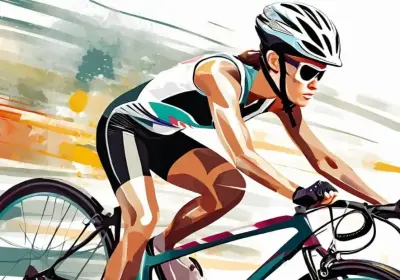





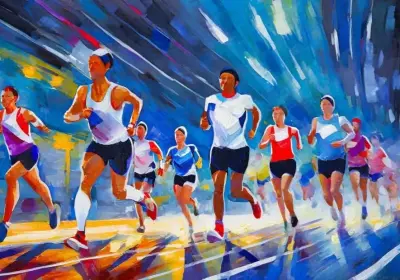


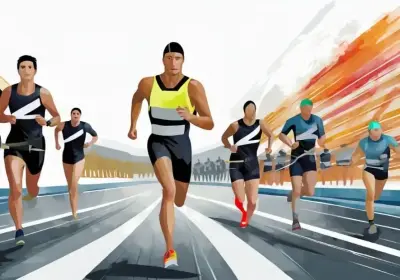
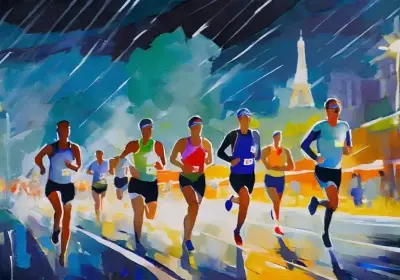


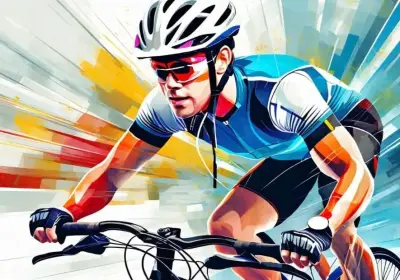
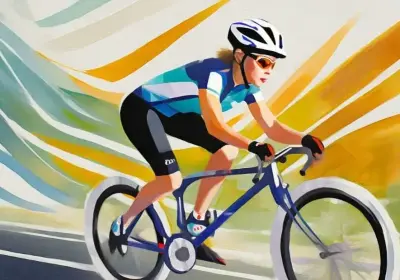



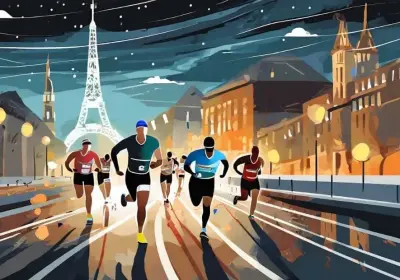











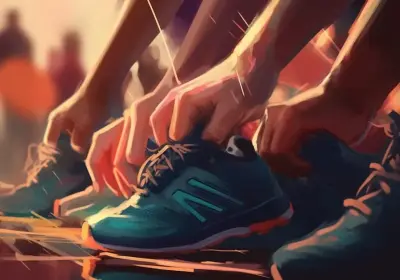


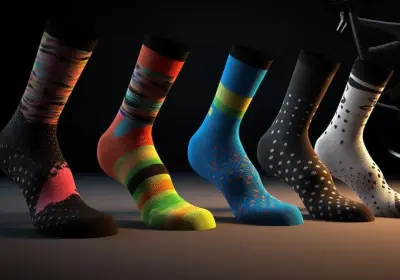





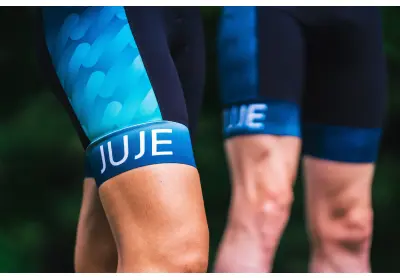








Leave a comment